The bird was in a terrible spot, but if he was willing to gobble I had to try to call him. It’s simply in the contract.
When you’ve hunted the same property for 25 seasons—Howard’s Farm, we call it—you learn where your chances of getting a gobbler to come in are reasonably good, where they’re iffy, and where they’re virtually non-existent. This spot fell into the last category: a wild swatch of the dry oak ridges and deep, thorny ravines that characterize Wisconsin’ Driftless Region, their sides veined with mucky seeps and studded with reefs of knobby sandstone. Every year, it seemed, at least one gobbler would fire up in that dark and bloody ground, typically late in the morning after the woods had been quiet for a while, and every year he’d wear me out.
Oh, I came tantalizingly close a time or two, but you know how much close counts for. I tried every sort of flanking and circling maneuver—Southern turkey hunters will recognize this as the Stonewall Jackson-Jeb Stuart playbook—called aggressively and sparingly, even resorted to pawing the leaves like a hen scratching for acorns. Nothing worked. Getting him to gobble was easy; getting him to move was like pushing a Cadillac uphill. With a rope.
But, again, when you put on the uniform you assume certain obligations. It’s a matter of honor. I found a good place to set up in one of those rocky outcrops, an aerie that afforded a commanding view of the hardwood bottoms below and the thinly treed, almost savannah-like terrain that swept up to the next ridge—somewhere in the vicinity of which the bird was gobbling his fool head off. At dawn the fields had been white with frost, but now, with the sun well up in a cloudless sky, a soft warmth, like that first sip of liquor, was repulsing the chill.
I got myself situated (whoever had the idea to incorporate a seat pad into a hunting vest deserves a MacArthur Genius Grant), and, with my knees drawn up and my shotgun across my lap I pulled out my box call. A “Twin Hen,” so named because it’s capable of producing two distinct tones depending on which of the raised side rails you strike the paddle on, it, too, was a 25-year veteran—the first call I ever bought and the only box call I’ve ever owned.
I worked off the heavy rubber band that keeps the call from squawking inopportunely and, cradling the box in my left hand, stroked the paddle. My aim was to produce a couple four or five-yelp runs, just to let the gobbler know I was there and maybe pique his interest. But on the third stroke, instead of going yawp, the call went crack!
The top portion of the near rail, the entire length of it, had broken off. Suddenly, my Twin Hen had become a Solo Hen.
There was a moment of bewildered disbelief, but I was more bemused than anything. The irony of breaking my call on a bird I had only the most Quixotic hope of killing wasn’t lost on me; better this scenario, in fact, than if I’d been calling a bird I had a real chance on. I still had my slate and a couple diaphragms, although I hadn’t checked the latter recently to determine if they were viable.
Still, I had to wonder if a trend might be emerging. That very morning I’d discovered I was down to the last shell from the box of 25 buffered, copper-plated, 1½-ounce #4s I’d bought when I started turkey hunting. I thought I had two (along with an emergency third I’d snagged from a box of heavy pheasant loads) but when I opened the lid I found that one was the empty I’d kept as a memento of last year’s hunt—a hunt notable mostly for its brevity.
Rain had delayed our departure on that occasion, and when it finally quit around 8:00 a.m. I left the cabin and slogged up the muddied trail. My destination was the high field at the top of the ridge, but when I stopped enroute to glass the big lower field I spied the dark mass of a gobbler displaying at the far end. I knew that my hunting partner, Andy Cook, was easing up the open hillside in his direction…and for once I correctly diagnosed the situation that was about to unfold. I hurriedly set up on the edge of the field, raised the gun to my shoulder to check my field of fire, and, with the tube of the old Remington Model 29 pump resting on my left knee, hunkered down to wait.
I didn’t wait long. A little swale funnels left-to-right in the direction I was facing, and soon a chocolate-brown hen materialized at the head of it, striding briskly for the woods. Another hen followed a few yards behind, and then, just as they melted into the timber, the gobbler hove into view in all his blue-headed, scarlet-wattled, bristly-bearded, glossy-feathered glory. He wasn’t letting any grass grow under his feet, either, but with a hint of swagger befitting his lordly status his pace was a touch more measured. It was as if he wanted to be sure his subjects had ample opportunity to admire him, his physical majesty, yes, but also his sangfroid in the face of danger.
I wasn’t altogether comfortable with the range and tracked the bird for a long couple of seconds, hoping for the benefit of what Andy and I refer to as a “clarifier.” When he paused about five yards from the edge, however, I knew it was now or never and, trusting in the 29’s freakishly tight patterns, pulled the trigger.
Wisconsin is a one-and-done turkey state, and by 8:30 that morning—half-an-hour after I’d started hunting—I’d swapped my camo for civvies and assumed the role of Cabin Boy: brewer of coffee, fryer of bacon, and washer of dishes; stoker of fires and fetcher of wood; and, most wickedly and deliciously of all, dweller in post-alarm dreamland.
Anyway, that’s the story of how, on my Silver Anniversary as a turkey hunter, I found myself down to the last of the 25 shells I’d purchased when I started. It was sheer coincidence, of course—and you shouldn’t for a moment assume a one-to-one relationship, or anything even close to it, between used shells and dead turkeys. A few rounds ended up with hunting partners who found themselves short, while several were devoted to patterning the 29. It had been Grandpa Davis’s pheasant gun, and when I discovered that its full-choked barrel prints 90-plus percent at 40 yards I had to marvel at his much attested-to wingshooting ability. I also had to wonder about the condition his birds were in for the table, although I like to think he was good enough to fringe them on purpose.
Coincidence or not, the poetic symmetry linking shells and seasons was inescapable. The same box of shells had seen me through my entire turkey hunting career, a career that with a single exception I’d spent entirely on Howard’s Farm. That exception, though, had been memorable: a hunt in Alabama with Tom Kelly, the legendary author of Tenth Legion. Pearls drop from his lips as effortlessly as rain falls from the heavens. I didn’t kill a gobbler on that trip, but I wouldn’t trade my time with Tom for all the turkeys south of the Mason-Dixon line.
I suppose that could be one of the reasons I haven’t expanded my turkey hunting horizons: because Tom Kelly’s such a hard act to follow. But the bigger reason, I’m convinced, is that my turkey hunting has become so bound up with Howard’s Farm—not only the physical environment but also the rituals and traditions we’ve established—that the thought of doing it anywhere else holds almost no appeal to me.
All but invisible from any road, Howard’s Farm occupies the high ground at the head of a remote hollow. A narrow, rutted lane provides access—if you have the key to the iron gate, that is—but it’s so obscure that unless you’ve been told where to look you’re apt to miss it.
Built like a fortress, the one-room cabin dates to the 19th century, although it’s been updated by the addition of a spacious screen porch. There’s electricity, so we have a refrigerator, stove, lights, and that most indispensable of turkey camp appliances, a coffee maker. A woodburning stove wards off the chill. Water—pure, sweet, numbingly cold—comes from a well on the north side of the cabin, a well tapping the same aquifer that feeds the Driftless Region’s famed trout streams: Black Earth Creek, Timber Coulee, the Big Green River, et. al. The outhouse, set discreetly downslope and shielded from view by thick patches of wild raspberries, is jam-up and jelly-tight.
Howard, a retired businessman in Madison, bought the place as a weekend retreat for his family long before turkeys were successfully reintroduced in Wisconsin. But if he’d asked a biologist to design a perfect place to hunt them, he hardly could have done better. The property’s a mosaic of fields and timber, very little of it flat and all of it connected by a network of trails—trails that Howard cut for hiking and skiing but have become thoroughfares for turkey travel. In the manner of hunters, of course, we’ve named our own landmarks over the years, landmarks that are now our geographical reference points: Jake Ridge, Ambush Knob, Sucker Hollow, Turkey Boy, Two Tom, The Orchard, John’s Corner, No Man’s Land …
We literally hunt right out the door—to the irritation of the phoebe that, year-in and year-out, builds her chalice-like nest atop the sill. After a day or two, though, she gets used to us, and while she still flushes when we come and go it’s with audibly less commotion.
She’s one of the many birds at Howard’s Farm who’ve come to seem like old friends. Bluebirds (the nestbox posted in the field across from the cabin reliably holds a pair), orioles, rose-breasted grosbeaks, rufous-sided towhees, brown thrashers, all manner of warblers: Much of our daylight down-time is spent on the screen porch with binoculars pressed to our faces, hoping to ID our favorites. Our most coveted sightings are indigo buntings and scarlet tanagers; while we can usually count on seeing at least one of the former—so shockingly, electrically blue that it appears dyed—the latter are more mercurial. They appear without warning, tarry briefly, and vanish.
One day when he was hunting Turkey Boy, a spot deep in the woods where several trails come together, Andy Cook looked up to see the canopy alive with tanagers.
“It was,” he reported, “like watching fireworks go off.”
I suppose there are better places to kill a turkey than Howard’s Farm. There’s just no place else I’d want to.
The high field has historically been good to me, and after lunch and a nap I climbed the winding trail to it. Shaved out of the woods in a relatively flat area, it’s an ellipse about 150 yards long and 80 wide. One end feeds into Jake Ridge, a crescent of mighty oaks that’s a favorite roosting spot; the other drops through a narrow cut into another field.
The end near the cut is typically where the action is, although finding a place to set up there can be a little problematic. The smart move would be to lug in a pop-up blind, but that goes against the grain of my turkey hunting persona. As Andy likes to quip, “You’re a-gile, mo-bile, and hos-tile.”
I finally found an oak broad enough to support my back and break up my profile. It was further from the edge than I liked, but with nothing else around except spindly popples it’d have to do. I had clear shooting lanes to the field, as well as a partial view to the Jake Ridge end and to the field below the cut. It’d been an uncommonly late spring, and with the woods just beginning to green up there was considerably more visibility than I was used to.
Of course, in the zero-sum game that is turkey hunting, this also meant that there was considerably less margin for error.
With my box call hors de combat I fished the slate out of my vest, drew the striker across it, and managed to produce several serviceable yelps. Satisfied that any gobblers in the vicinity now knew there was a lonely hen hereabouts, I laid the call in the leaves, propped the Remington on my knee, and sat back. Turkey vultures circuited above, tipping their wings this way and that as they rode the vagrant thermals, their shadows sweeping the earth like searchlights in reverse.
I hit the slate again after an appropriate interval. Almost immediately, a jake emerged from the woods directly across the field. He began pecking his way to my right, and I watched him intently—until something like a sixth-sense made me glance to my left.
Not 80 yards away, on a subtle crest in the field, stood a jaw-dropping gobbler. He was in full strut, and he was monumental. His wattles flamed. His feathers shone like polished armor. His fan was the size of an infield. When he drummed, it was like thunder from the bowels of the earth.
He had a pair of hens in tow, hens who were hugely unimpressed by the show he was putting on. While they and the jake fed, meandering this way and that, fading from view for a few minutes only to reappear, he drummed, displayed—and hardly moved an inch. It was as if he were the sun, and the other birds were planets in eccentric orbit.
For my part, there wasn’t a hell of a lot I could do except try to sit still. Once when the gobbler and his entourage drifted to the far edge I felt safe making a few clucks with the slate, but otherwise I was fully engaged in the act of not moving. This became increasingly difficult as time went on, and more specifically as my ass began to ache. What started as a minor complaint gradually swelled into a fist-waving, slogan-chanting protest, one that took all my powers of persuasion to keep from erupting into open rebellion.
Half-an-hour passed, then an hour, and the gobbler wasn’t significantly closer to me than he’d been when I first laid eyes on him. I found myself referring to him under my breath in rude and ungenerous terms.
But then, ever so slowly, the other birds began to slide toward my side of the field. It was like watching the tide come in, every wavelap extending fractionally further than the last. And the gobbler, not willing to let them slip beyond his imagined sphere of influence, began edging in my direction, too.
Oh, how regally and agonizingly deliberate he was! Eons passed, eternities, civilizations rose and fell before I centered the muzzle on his warty throat. It was the longest shot I’d ever attempted, but I might not get another chance. And the 29, Grandpa’s gun, had never failed me …
On my 25th season hunting turkeys at Howard’s Farm, with the 25th shell from the box I’d bought when I started, I killed the biggest gobbler of my life—a bird that tipped the scales at just a shade less than 25 pounds. Back at the cabin, I peeled the tattered camo sleeve off the Remington—and discovered that the stock, at the place where it meets the receiver, had all but shattered at the shot.
Not that I’m superstitious, but I’m thinking of appointing myself Cabin Boy in perpetuity.




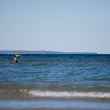


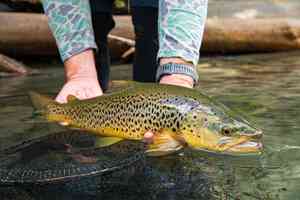


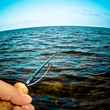
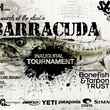


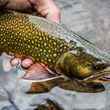




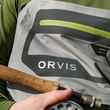



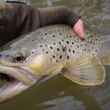
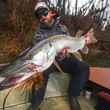
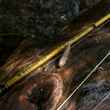
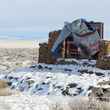
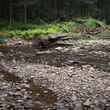
Comments